Mark Amery – 11 November, 2011
The Russian Frost Farmers are an erratic tonic amongst a profusion of more regulated, art world-integrated spaces elsewhere. The title of their first group show in a found space across from Te Papa back in 2008 His Grenades Are of Wrong System put it nicely. It's illustrative of their spiky experimental play with the language of art.
Wellington
The Russian Frost Farmers
Two Sides of the Same Coin / GOLDENROD: adorned log
28 October - 4 November 2011
The Russian Frost Farmers, an artist-run space and umbrella programme for art projects, has been quietly, erratically running for three years now. Its physical exhibition and performance base is at 3 Eva Dixon Street in Wellington, a suitably grungy off the main grid thoroughfare. Its now fulsome website provides a snapshot of TRFF’s live wire collective personality.
Beyond its inner city clubhouse, TRFF’s focus has been more international than national. Founding members have circulated globally, putting together exhibitions in Istanbul and Germany featuring New Zealand artists, alongside providing shelter to likeminded artists in Wellington.
When I describe The Russian Frost Farmers as erratic it’s not a criticism. They’re a tonic amongst a profusion of more regulated, art world-integrated spaces elsewhere. And yet they still feel like a programme, with exhibitions and performances briefly sparking into life, irregularly in all sorts of unexpected directions. The title of their first group show in a found space across from Te Papa back in 2008 His Grenades Are of Wrong System put it nicely. It’s illustrative of their spiky experimental play with the language of art.
TRFF describe themselves as “an umbrella for creative adventures, supporting the idea of utopian lifestyles beyond the realm of chronic organization.” They express their philosophy as “to experiment in the unknown and to recycle old ideas bringing to life alternative methods of ‘farming’.”
A place for field-tests then, rather than completion. The work I’ve seen (and I confess to arriving more often when the roller door is down than up) has often felt like the start of interesting directions, or fragments from conversations I’m not part of, rather than satisfying wholes. But then the principal focus here is on the artist and their community, rather than the public.
Activity this year suggests that may be changing, with the current and previous group exhibition Celebrity Workshop Syndrome looking further beyond the original RFF collective and community in approach.
There’s clearly order behind the TRFF shifting programme, because Two Sides of the Same Coin is in fact their third annual international exchange. They are participating in an exchange with Cardiff artist-run gallery g39 who are concurrently showing an exhibition of New Zealand artists. (All images here are from Cardiff.) The exchange is an invitation from ‘11433’, an artist networking organisation from the Wales Artist Resource Programme which is focusing on the development of ongoing collaborative relationships between the self-organised visual arts communities of Wales and New Zealand. Sunday 30 October in Wellington saw a discussion on artist run spaces and the broadcast of a discussion the day before in Cardiff between Welshman Bedwyr Williams and former Wellingtonian, curator Frances Loeffler.
Two Sides’ theme of cultural exchange is loose but it’s the lightness of the show’s treatment, redolent of Wales’ digital closeness yet physical distance that works.
Like the flip of a coin this show is no major consideration of the interesting connections between Wales and New Zealand - indigenous first language, not dissimilar population size etc. - in fact it doesn’t even try. Rather it’s all about handshakes and postcards - art as an act of greeting to commence an exchange - and the imaginative space between physical locations.
The inclusion of two locals hits a slightly off-key note but they play to the above feel well. Brit James R Ford emigrated to Wellington in 2009 and as a parting gift set a fleet of toy boats off on their travels - or perhaps he couldn’t be bothered. From this real or made up event he mocked up in ‘olde English’ font a newspaper daily headline sandwich board sign stating ‘Artist launches Toy Boats into Thames’, now on display in Wellington (previously shown at Enjoy).
Ford’s practice involves public gestures that extend on childhood play. He ultimately provides comments on big things through the use of small repetitive personal actions based on his own biography. This work rather effectively plays on the old New Zealand ship-based theme of ‘the tyranny of distance’, in an age when to go public with private actions is as easy as a tweet, and what is true and what is constructed becomes a slippery mind game between yourself and a conceptual artist. It reminds us in permanent ink that you can set off on an endeavour as an artist around the world and, unlike Joseph Banks, barely anyone notices you’ve gone.
Kate Woods uses the TRFF space to experiment with media in her typical layering of a necklace of fractal shapes onto landscape. Here the shapes have become rough three dimensional sculptural elements on board, onto which is projected simultaneously two different images - the outer rim looking up in daylight into the sky, through the geometric block frame provided by office buildings, the inner a downwards looking view of Wellington city at night. Wood’s collapsing together of different perspectives makes us aware of how our views of things are gridded.
Wood’s complication of our postcard view of the world, is well-matched by Kevin Hunt sending from Wales postcards of both scenic New Zealand and Welsh landscapes. Put on their sides and mirrored with doubles, they rather effectively turn into spiral swirls of paint, as if we’re being sucked down a scenic sinkhole.
China-based Welsh artist Huw Andrews work is a strong pairing next to Ford’s. Andrews uses image and audio to playfully construct a journal of his ‘current preoccupations’ in the East, whilst still being plugged into the West, and providing us the listener with room for its complication. He very effectively employs sound to shift our cultural sense of space and place.
My favourite work in the show is Fern Thomas’s video and sound work Fragment, even though it feels the most tangential to the theme. It’s a beautiful, intimate piece of storytelling, speaking of the power of found objects to be a touchstone for memory in relationship to the imagination. The sense of belonging small physical things can carry with them.
The narrator softly tells us of the garden of her childhood, with down the back its ‘threshold’ to a darkness beyond. She made me think about the way such a place shifts in meaning in the mind as you might move a small object around in the palm of your hand. In the garden she finds a ceramic fragment, which the video then reveals to us (awkwardly the screen is black until this point). Such a simple thing becomes a talisman, the storytelling a magic show.
It’s not easy keeping an experimental art collective together on no public funding for three years - let alone an inner city piece of property. The closure this month of ‘underground’ art space My Galaxi around the corner after 18 months in operation is a more typical lifetime for these entities. It’s something a Chris Kraus’s reading in Wellington last week of her account of Los Angeles’ influential Tiny Creatures (from her book ‘Where Art Belongs’) also made clear. So here’s all the best to the Farmers and their ever-burgeoning programme, here and overseas.
Mark Amery
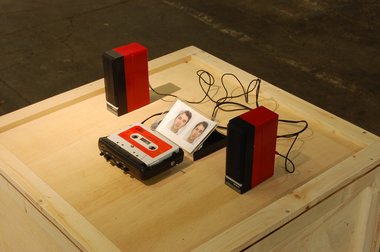
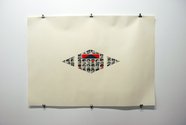
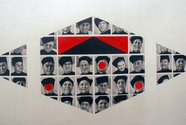

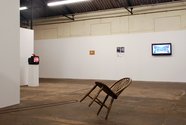
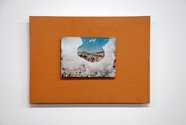

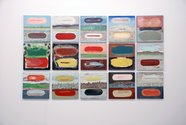
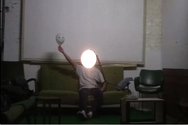

 Two Rooms presents a program of residencies and projects
Two Rooms presents a program of residencies and projects Advertising in this column
Advertising in this column
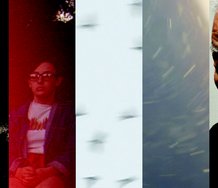
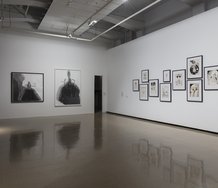
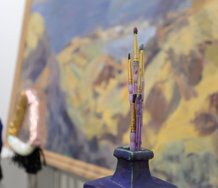
This Discussion has 0 comments.
Comment
Participate
Register to Participate.
Sign in
Sign in to an existing account.